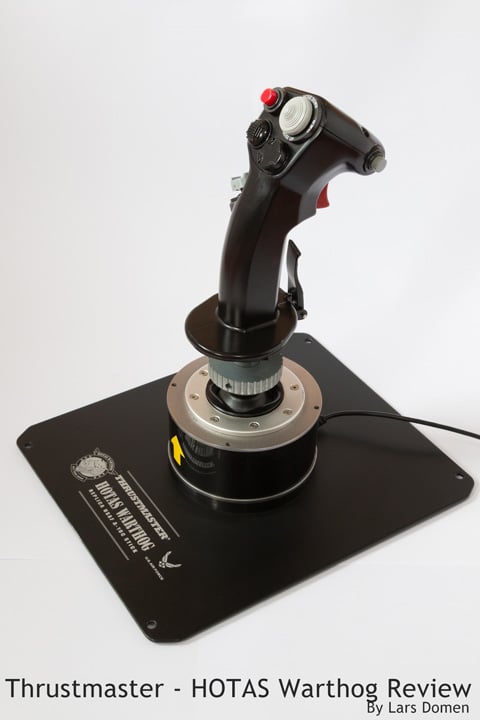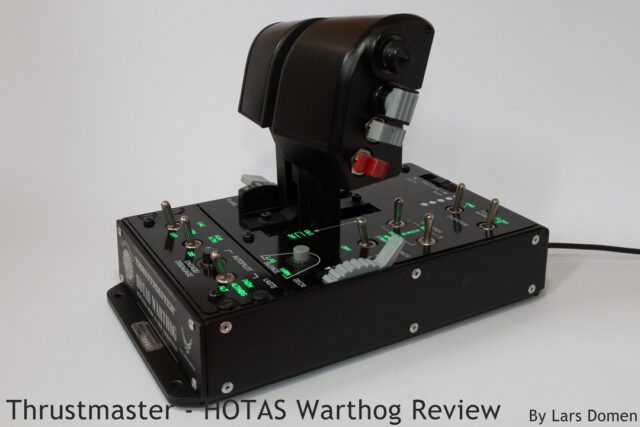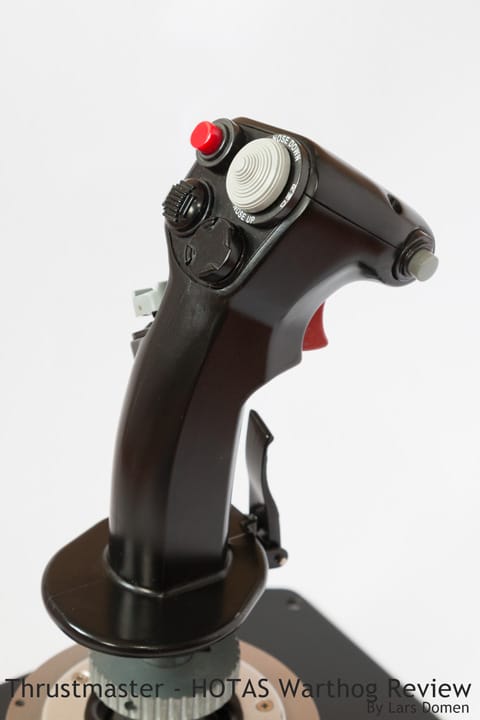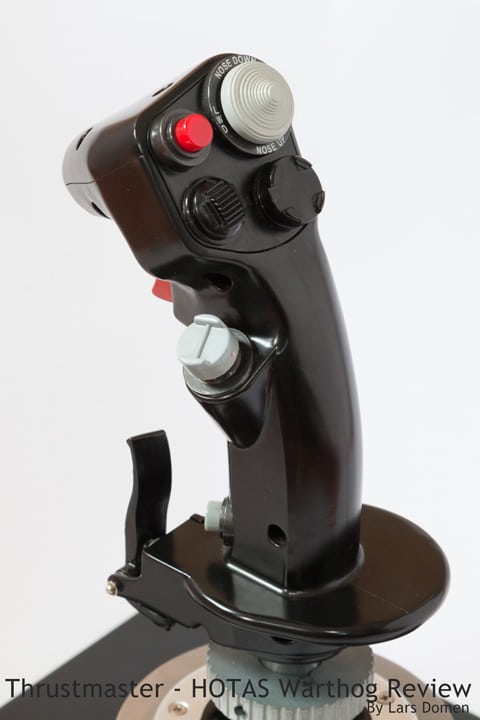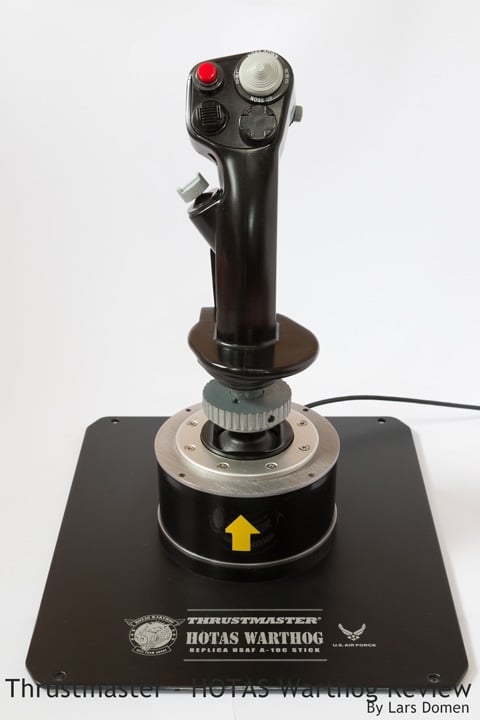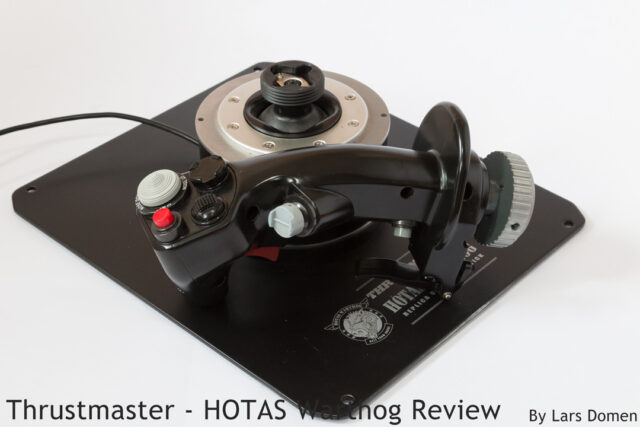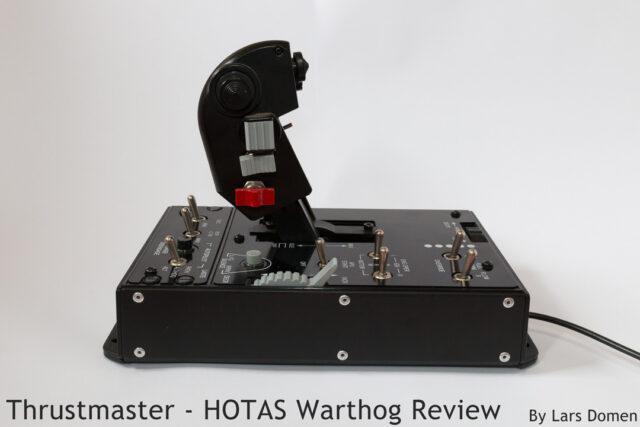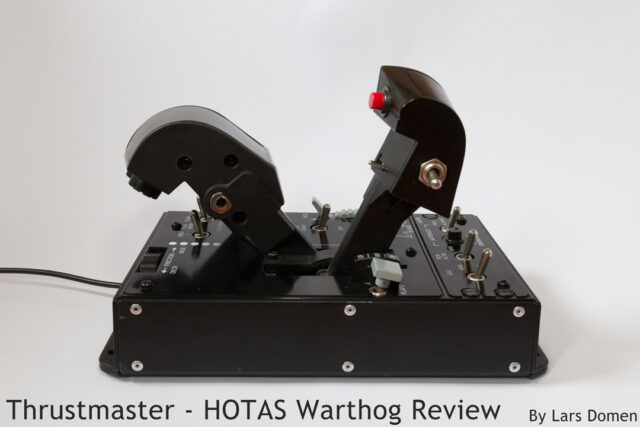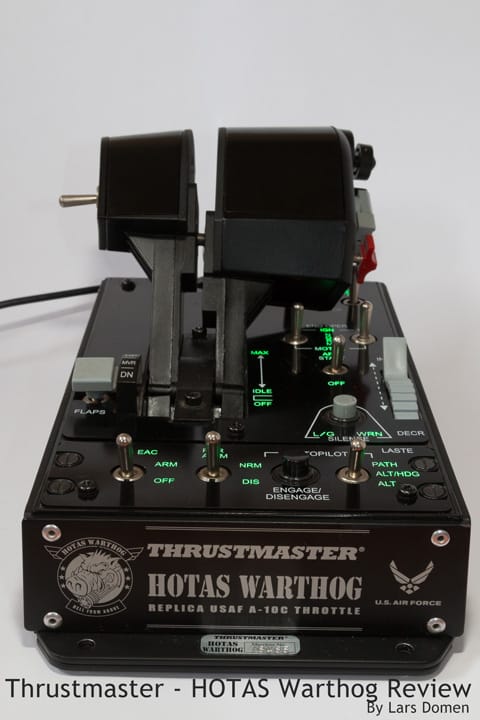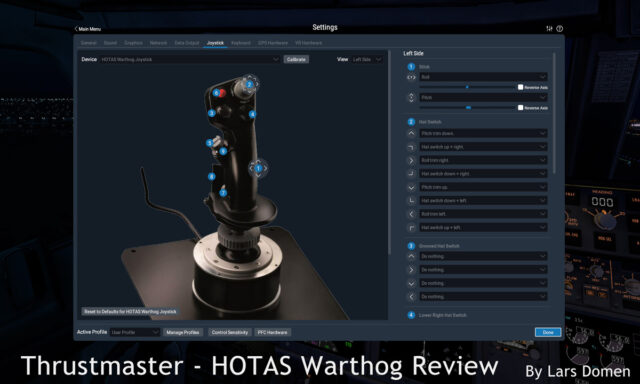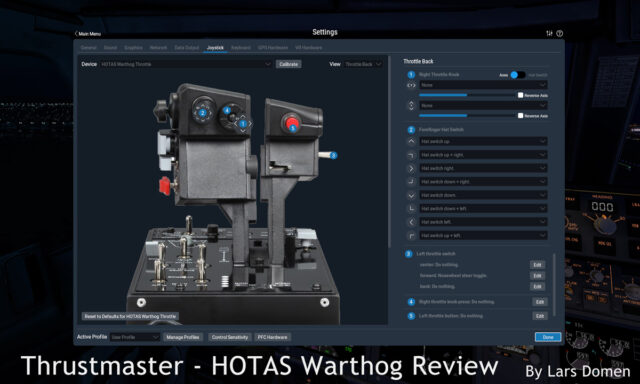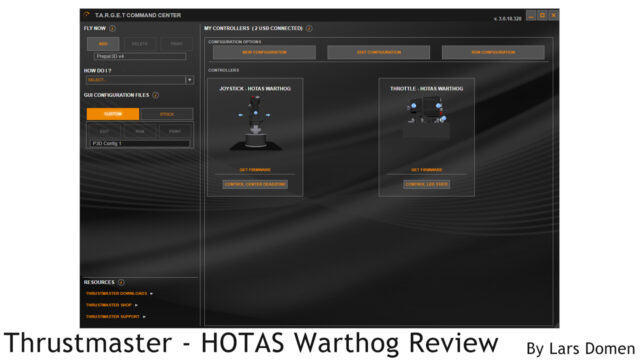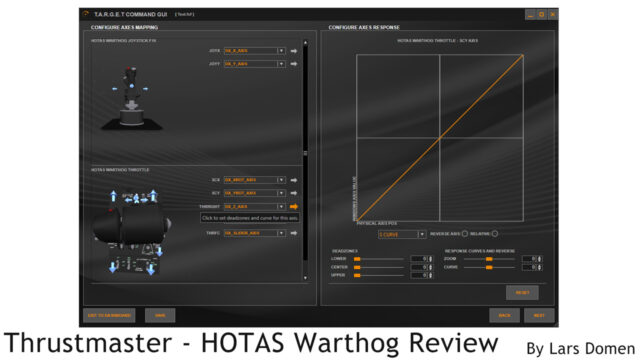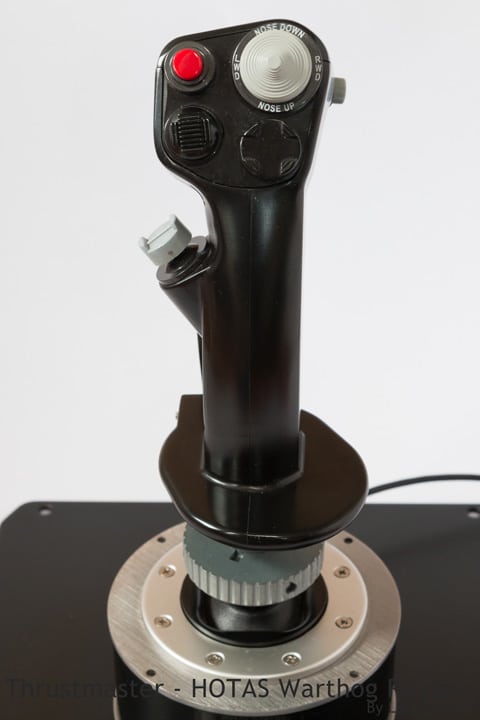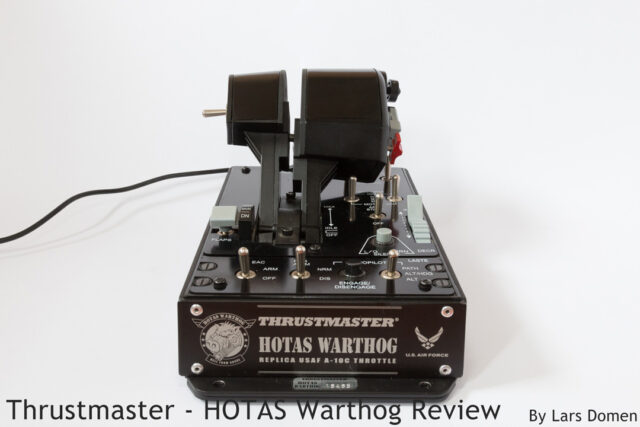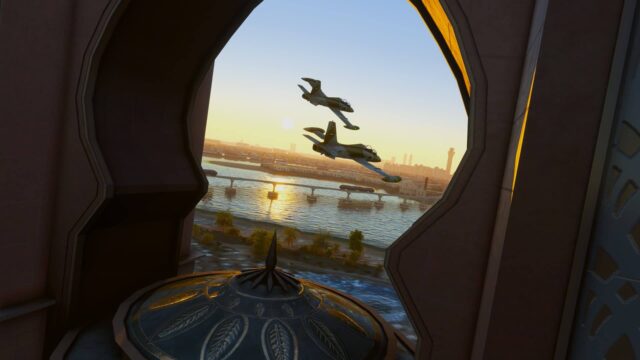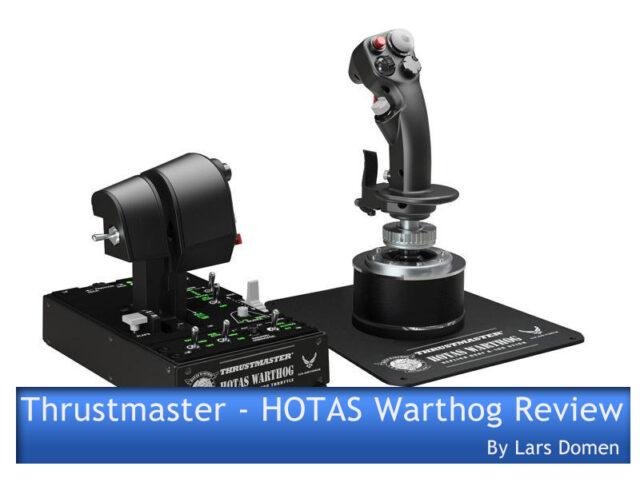 Ever since its release in 2010, the Thrustmaster HOTAS Warthog has been the go-to high-end joystick/HOTAS for consumers. Numerous reviews have been written about it. But I wasn’t going to back out of the opportunity to look at it myself.
Ever since its release in 2010, the Thrustmaster HOTAS Warthog has been the go-to high-end joystick/HOTAS for consumers. Numerous reviews have been written about it. But I wasn’t going to back out of the opportunity to look at it myself.
A short disclaimer: the unit I’ve tested is a showroom piece kindly loaned to me by SimWare Simulations Belgium, to whom it will be returned when I have finished my review. Being a used display model, I did not get it in the original box, and so can’t say anything about packaging quality or what accessories and manuals are normally included. The units on loan to me have also been heavily used for conferences and customer demos over the years. So they (and the pictures taken of them) do not always represent new or well cared for examples.
Overview:
The Thrustmaster HOTAS Warthog is a HOTAS (Hands On Throttle And Stick) system that replicates the actual HOTAS of the Fairchild Republic A-10C Warthog. The entire system comes as 2 units, the stick and the throttle, each of which has its own USB-connection to the PC.
The stick is mounted on a base plate 23 cm wide and 27 cm deep. It stands 28 cm tall and weighs in at a hefty 3.4 kg. (9 x 10.6 x 11 inches and 7.5 pounds) Its cable is a generous 1.8m (5.9 feet) long. Apart from the obvious X and Y axes, the joystick features 3 push buttons, a two-stage trigger, a single stage pinkie trigger, one 8-way hat switch and 3 4-way hat switches, one of which has another integrated push button.
The base plate can be removed from the stick for mounting in a sim cockpit. But the base plate also has screw holes.
The throttle unit is also quite hefty, coming in at 4.2 kg (9.9 pounds). The base is 15 cm wide, 27 cm deep and 5.5 cm high (5.9 x 11.6 x 2.2 inches). With the throttles in the middle position, the entire unit is 19 cm (7.5 inches) high. It also has a 1.8m long USB-cable.
It features 2 separate throttle handles. In addition, it has the following controls on the base: another analog slider with a centre detent; friction adjustment for the throttles; 2 push buttons and numerous 2 and 3-way toggle switches, a couple of which are spring loaded.
On the throttle handles there are numerous other controls available: one 8-way and one 4-way hat switch; a mouse nipple with integrated push button; a separate push button and three 3 way rocker switches.
Although they are usually sold together, the stick and throttle are also sold separately if you can find them. The current retail price for the complete HOTAS is €314,04 without VAT at SimWare. If you add European VAT, this typically ends up somewhere between €350 and €400. Do note that this is significantly cheaper than on Thrustmaster’s own UK webstore.
Hardware: the stick:
In no small part due to the hefty weight, the very first impressions of these units are very solid. We’ll take a closer look at the stick first.
The first thing of note is that the entire stick is made out of metal. Only the knobs and buttons are plastic. The result is a stick that feels incredibly sturdy, and delightfully cool to the touch. It’s also easy to keep clean. A small downside is that it can feel a bit slippery if you have sweaty hands.
With this being a replica of the real A-10C stick, Thrustmaster didn’t have any liberty with the button placements. But as expected, the designers of the real unit put some thought into this. All buttons are easily reachable and intuitively placed.
The one remark I have here, is that the stick isn’t designed to be placed on top of a desk. It feels a bit better, ergonomically speaking, when grabbing it slightly from above, instead of directly from behind or below. But it remains a very pleasant experience to use this stick.
The actual quality of the buttons is head and shoulders above anything I’ve experienced before in lower priced joysticks. The feel is solid, there’s a more than decent amount of travel and tactile feedback is very clear. In my time using the stick I didn’t have any problems with inputs not registering or getting registered twice. Not once.
The main purpose of the stick is to control pitch and roll of the aircraft. The Thrustmaster Warthog does this well. The axes are smooth and direct. The centring force is quite high though. This feels good when flying a fighter or heavy jets. It’s not as comfortable for helicopters in my opinion. Although I’d still pick this stick over a cheap unit with low centring force, due to the quality and smoothness of the axes.
One definite downside is that the Thrustmaster Warthog doesn’t feature stick twist to control the rudder. You will need another control to provide yaw input, rudder pedals being the most likely choice.
One final feature to mention is a special one: the handle is removable. It can be disconnected from the rest of the unit by a simple (metal) screw. This connection once again feels very solid and strong. The system is compatible with the older Thrustmaster Cougar. And different handles have been hinted at or even displayed by Thrustmaster, but so far none are available. There are third party handles that fit on the HOTAS Warthog base though.
Hardware: the throttle:
The throttle unit uses quite a bit more plastic than the stick. But it doesn’t diminish the overall feel and build quality of the unit. In terms of accuracy, Thrustmaster repurposed the slider that controls throttle friction in the real unit as an assignable axis with a centre detent. They added a dedicated friction wheel further to the front of the base.
As with the stick, all controls are of very high quality. The toggle switches especially so. They are large, and toggle with a satisfying clack. No worries about accidental control actuation.
The actual throttle handles are large and covered in conveniently located controls. The axes themselves move smoothly through their ample range of movement. Using a latch on the left throttle handle, both handles can be locked together to be operated as one if you so desire.
The throttle unit also feature a couple of special features. Firstly, the throttle handles can be lifted over the idle position, into the ‘Off’ position. This position is not part of the analog axis but is sent to the PC as a button press.
A max power detent can be easily installed. It’s just a matter of unscrewing the cover between the throttle handles, flipping over a small part and reattaching the cover. The result is a detent around the 80% throttle position. Using the correct axis settings, you can configure this to use with afterburning engines, or as a TOGA position in aircraft that have these.
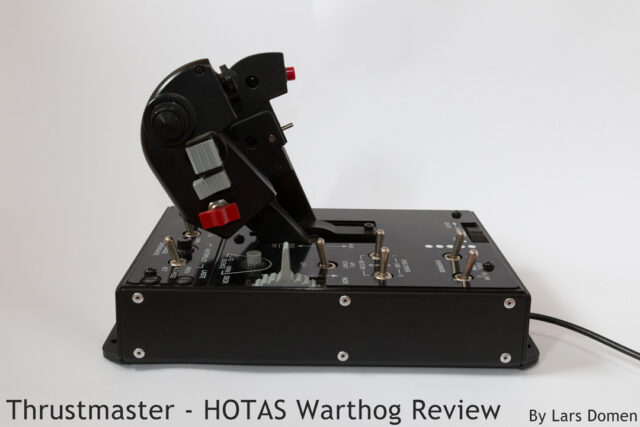
Finally, the throttle unit features green backlighting through some of the text labels next to the buttons. Using the accompanying software, this lighting can be turned on or off, or adjusted in brightness.
There is one more thing to say about these text labels though. They’re specific to the A-10. Splendid for authenticity, especially when you’re also flying an A-10 in sim. A bit less convenient if you’re flying several aircraft and more generic labels are more suited for you.
Software and Interface:
No matter how good a piece of hardware is, it must play nice with the software as well. There’s something to say here. The plethora of latching toggle switches on the throttle makes perfect sense in the real aircraft. But it is a bit less suited to our simulators. Especially FSX and P3D seem to expect only momentary push button inputs, resulting in a rather clunky experience. X-Plane and DCS are a bit more flexible in their button behaviour.
This story continues when looking at default button assignments. FSX/P3D provide a very limited, but functional profile for the joystick. However, with the stick and throttle being separate units, the sim also assigns default axes and buttons to the throttle as if it were a joystick. The results is a whole bunch of controller conflicts, and an unusable throttle. You will need to go over these assignments before you can use them.
In X-plane, the default profile is relatively usable. Stick and throttle are recognised as they are, and at least the axis assignments make sense. But to get to a profile that suits your needs and makes use of what the Warthog offers, you’ll still need to put in some work.
DCS finally is different yet again. DCS uses separate control profiles for each and every module in the sim. Default assignments for most aircraft resemble the situation with FSX/P3D: lots of control conflicts and the need to go over it all before it becomes functional. But there’s an exception. The DCS A-10C comes with a complete profile for the Thrustmaster Warthog. The moment you plug the system in, it’s ready to use with the A-10. The one difference is that the hat switch is still used to look around, instead of controlling trim.
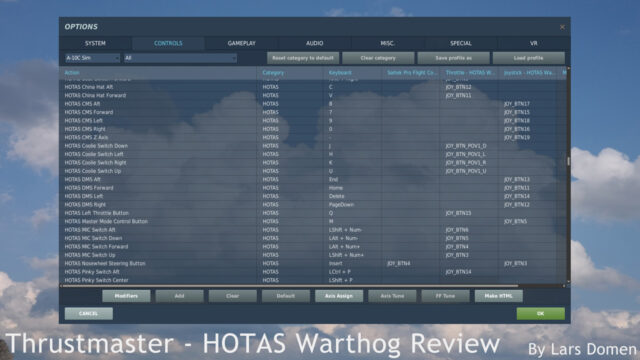
If you want to move beyond what is possible in the simulator, Thrustmaster has you covered. They provide a utility for their hardware controls called T.A.R.G.E.T. or Thrustmaster Advanced Programming Graphical Editor.
I’m not going to go too deep into T.A.R.G.E.T. But I will quickly describe what it can do.
Basically, you can use this program to build profiles. These profiles can be quite powerful. You can program key presses, but also key combinations and macros. More advanced still is the ability to use modifier or mode buttons, and work with several layers of assignments, for even more possible controls. And then there’s the possibility of just sending a DirectX control, which you can assign in the simulator. Per profile you can also adjust axis settings like dead zones and curves.
The learning curve to creating these profiles is quite high. Actually creating them can be done in 2 ways. Using the graphical editor is the easier way. But there’s also a script editor that’s more powerful but has an even steeper learning curve. The documentation that comes with T.A.R.G.E.T. does an okay job of guiding you through the creation of a simple profile using the GUI, but falls short of giving a thorough understanding of all possibilities the software offers.
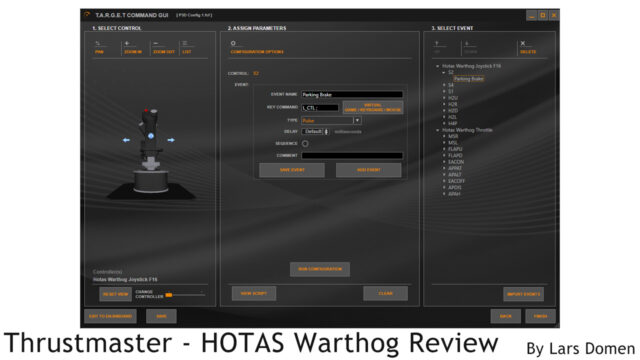
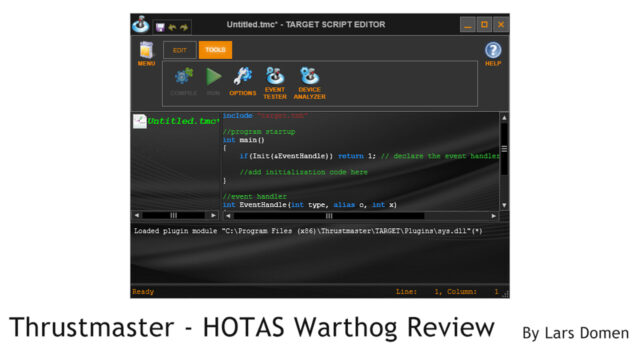
When you run your profile, T.A.R.G.E.T. hides both the Warthog stick and throttle from your PC and exposes a new virtual game controller called Thrustmaster Warthog Combined, which combines the two and makes use of the profile you programmed.
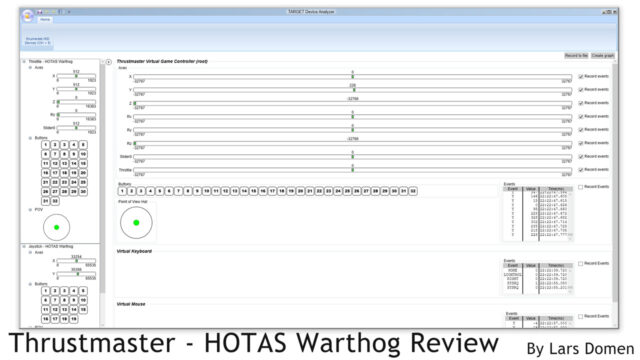
The downside here is that switching between profiles is not very easy or fast. And it also means constantly connecting and disconnecting (virtual) controllers. Not all games and simulators handle this quite well. In the worst case, you have to close and restart your game for every new profile or change to a profile you want to test.
Another thing to keep in mind is that you have to remember to start T.A.R.G.E.T. and run your profile every time you want to use it. For this reason alone, I don’t think this is the best or most elegant solution possible.
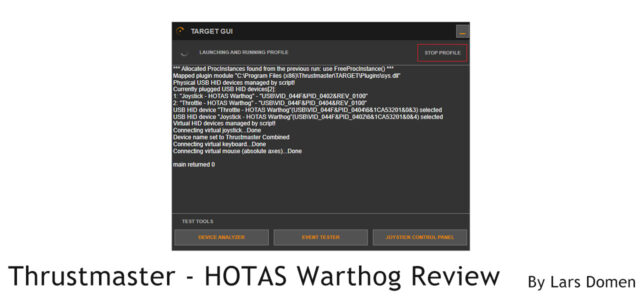
Conclusion:
Ever since its release, the Thrustmaster HOTAS Warthog has been a very popular and highly regarded piece of equipment. The reasons for this are clear. Every aspect and part of these hardware units feels solid and authentic. Both stick and throttle are big and heavy units. The build quality, as far as I can tell, is excellent. Replicating the actual A-10C’s controls resulted in an authentic visual impression and great ergonomics. But it also leads to some struggles with normal in-game control assignments.
The software that comes with this HOTAS is functional and very powerful. But there is a significant learning curve to it, and some aspects of its operation are a detriment to ease of use.
I want to thank SimWare Simulations Belgium once more for their kind support that made this review possible.
Like:
- Outstanding feeling package
- Solidly built all the way round
- Authentic looks
- Excellent tactile experience for controlling your simulator
Don’t like:
- T.A.R.G.E.T. is not the most intuitive program, nor is it the most easy and accessible to use.
- Latching toggle switches don’t always go well with games/simulators that expect momentary push buttons.
- The large size of the units can be bothersome at times
Useful links:
Test System:
Intel Core i7-6700K @ 4x4GHz (stock speed)
32GB DDR4 RAM
Asus GTX 1070 Strix Gaming 8G
Windows 10 64 bit
Prepar3D v4
X-Plane 11
DCS 2.5


